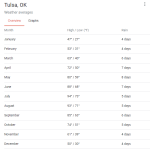In our climate, I wouldn't sweat it. Not sure if you were in OKC at that time but that episode I mentioned we were sub freezing temps for almost 2 weeks. Sub zero for a couple of those days. Definitely not a normal occurrence for our region.
The only thing extra that I did, was to rig up some electric water heater elements, to hang in front of the skimmers, so that the mouth of the skimmers wouldn't freeze. I also tented the equipment pad to keep the wind off of the exposed pipes/equipment.
My surface was frozen completely except for the areas right in front of the skimmers. No damage.
I have a friend at work who did nothing but make sure the pumps stayed running during that arctic freeze. He had ice built up from his waterfalls/scuppers, and his spa spillover as well as the whole surface was frozen. His skimmer mouths got ice in them as well. No damage to his pool.
I don't even remember the freeze last year. I remember getting snow right before Christmas, was that it? I don't think mine froze at all during that. If it did, it wasn't significant because I don't remember it.
--Jeff


